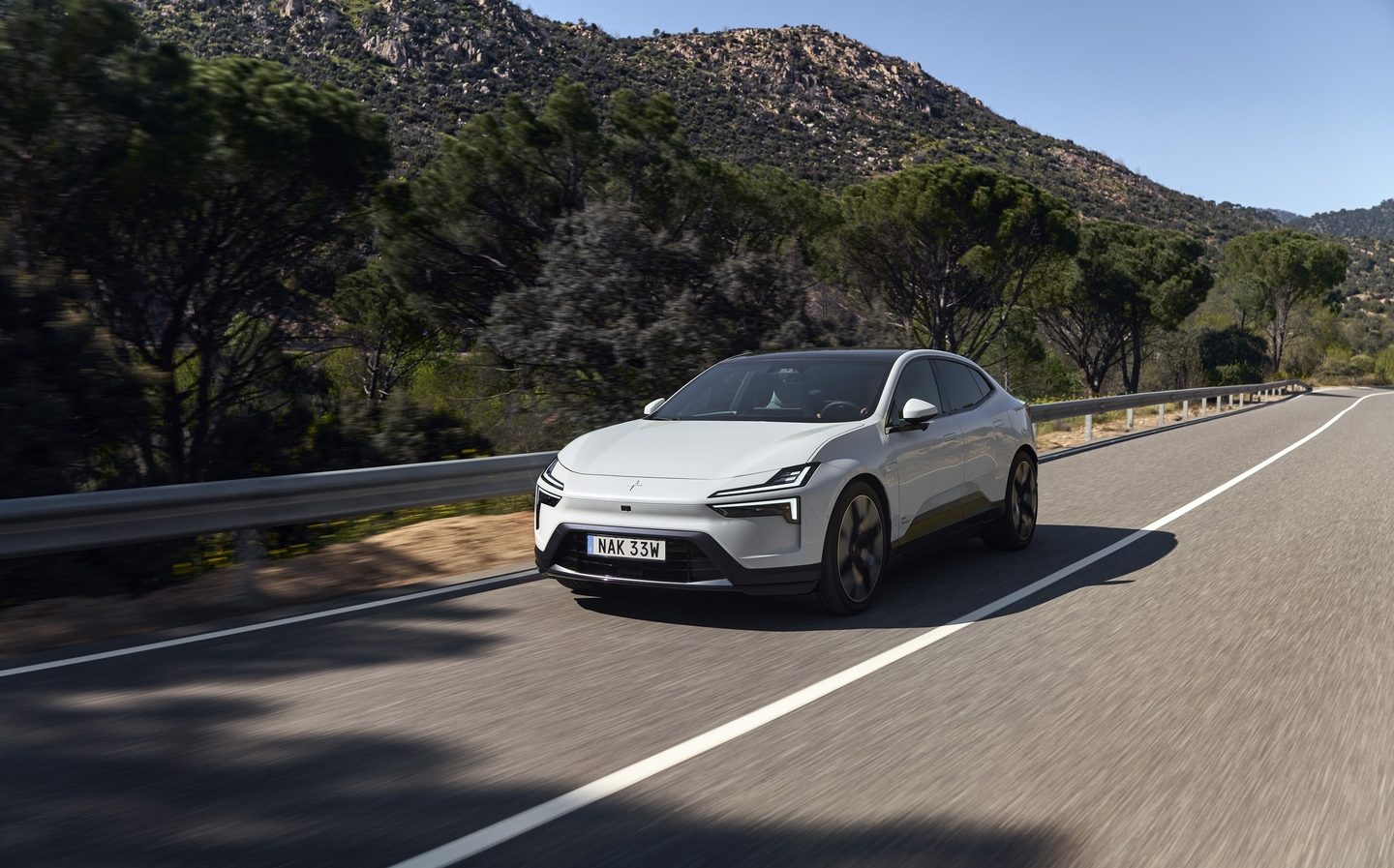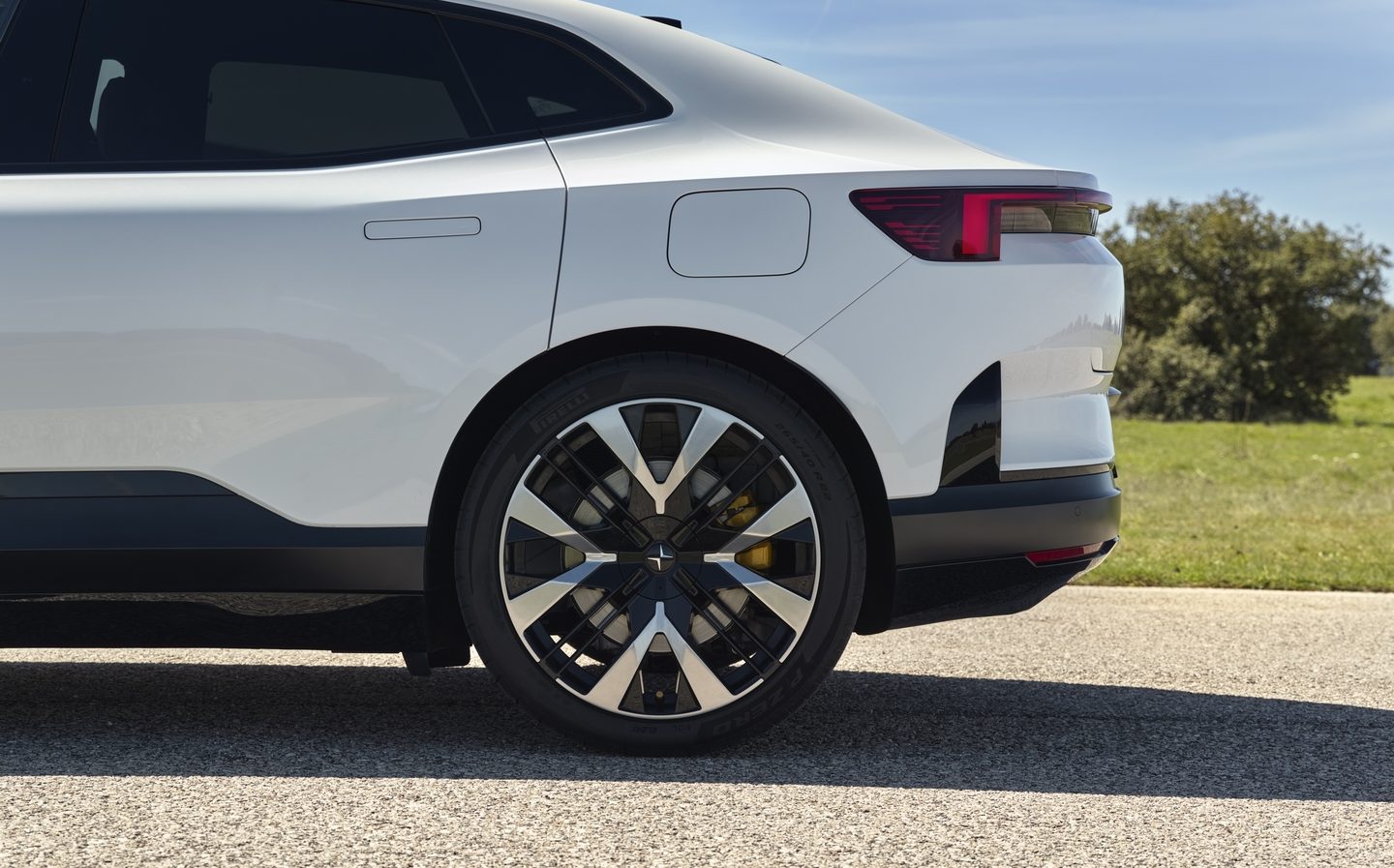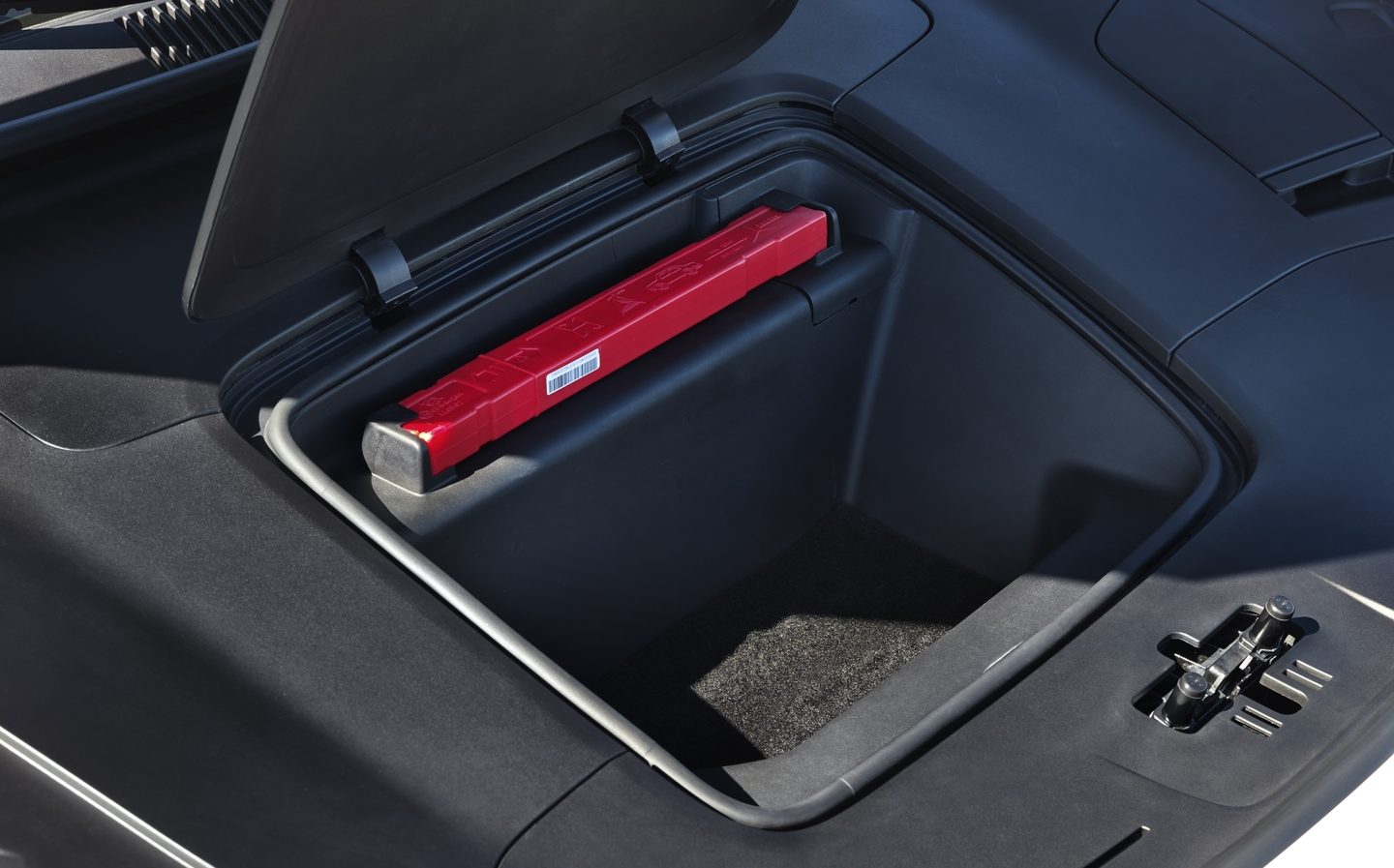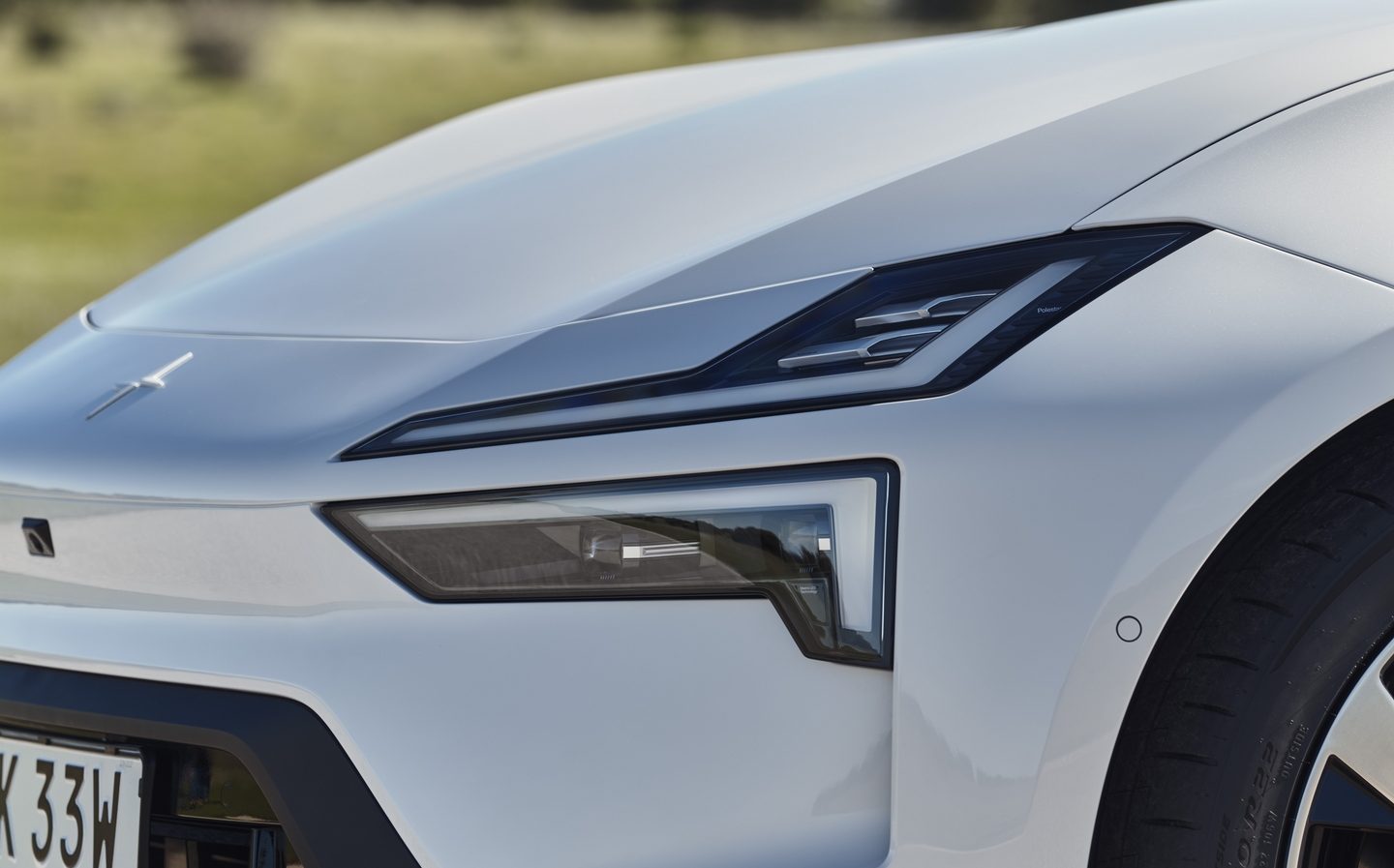Polestar 4 2024 review: No rear window but a clear vision — taking on the electric Porsche Macan
No looking back for Swedish electric car brand
Polestar is in a bit of a funny place at the moment. Really the Swedish brand ought to be wildly fashionable, what with its blend of Scandi-cool, electric-only devotion and apparent commitment to saving the planet, one car at a time.
But Polestar has an alter ego, a sort of parallel universe version of that cool and groovy image. It is a company which has had to dramatically change its financial and ownership structure in the past few months, a company which has been fighting with the Nasdaq stock exchange about its listing, and fighting too with lethargy and apathy among the wider buying public when it comes to electric cars. Compounding the problem is the fact that still too few car buyers know what a Polestar is or what it’s meant to do.
Which Polestar made the new Polestar 4, then? The one metaphorically wearing sunglasses made from recycled oak, or the one shoving financial reports under the bed?
It’s hard to work out just what a Polestar 4 is, too, not least because Polestar’s naming strategy is a touch opaque. The Polestar 1 was a strictly limited, hopelessly gorgeous, two-door hybrid coupé which vied with Ferraris for both power and physical presence. The Polestar 2 is an impressive pure-electric saloon. The Polestar 3 is a big, expensive electric SUV and, logically, sits above the Polestar 2 in the model lineup.
The Polestar 4 should, therefore, be even bigger, pricier and more premium than the Polestar 3. Except it isn’t. If the Polestar 3 is a rival to the likes of a BMW iX, then the Polestar 4 should be compared with the likes of the Porsche Macan EV, and in a numerical twist sits halfway in price terms between the Polestars 2 and the 3. Polestar assures us that as more models are launched, taking numbers 5 and above, its iPhone-like naming strategy will become clear. But for now it’s a touch confusing.
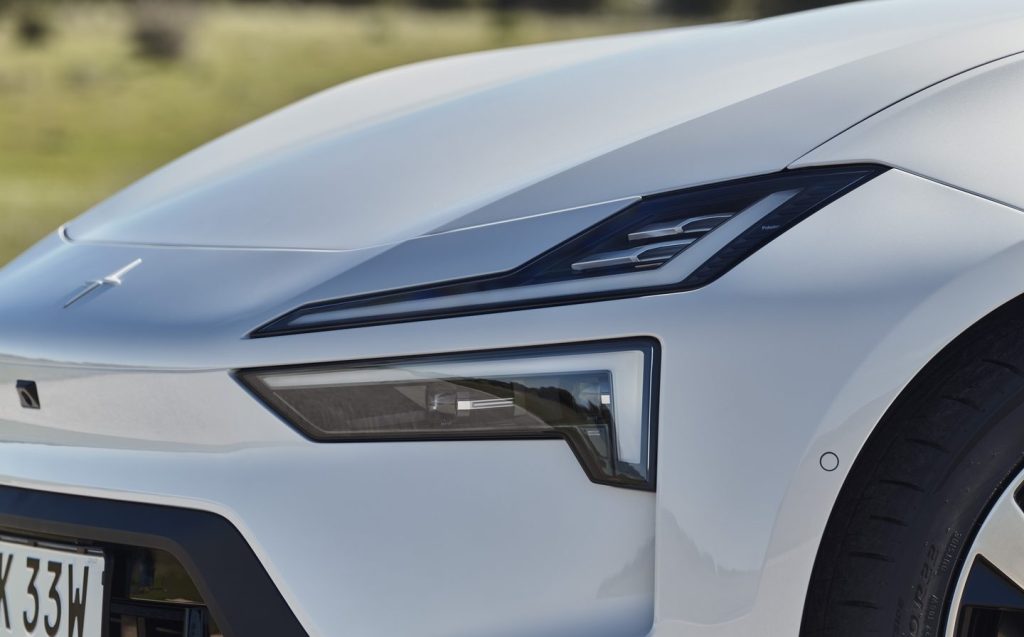
So too is the Polestar 4 itself, but it’s confusing in a good way. It’s certainly a crossover a regular hatchback or saloon on stilts) — the copious air under the bodywork and around the wheels sees to that — but it’s just about low enough to do double duty as a sleek fastback. It’s part Macan, part BMW i4 and rather gorgeous from its needle-like nose with split-L-shaped headlights to the attention-grabbing rear end.
The first question — best asked in a Jimmy Stewart impression — is where has the rear window gone? Where indeed. The Polestar 4 has no rear window, and Polestar claims there’s a very good reason for that: it’s all to do with rear passenger headroom.
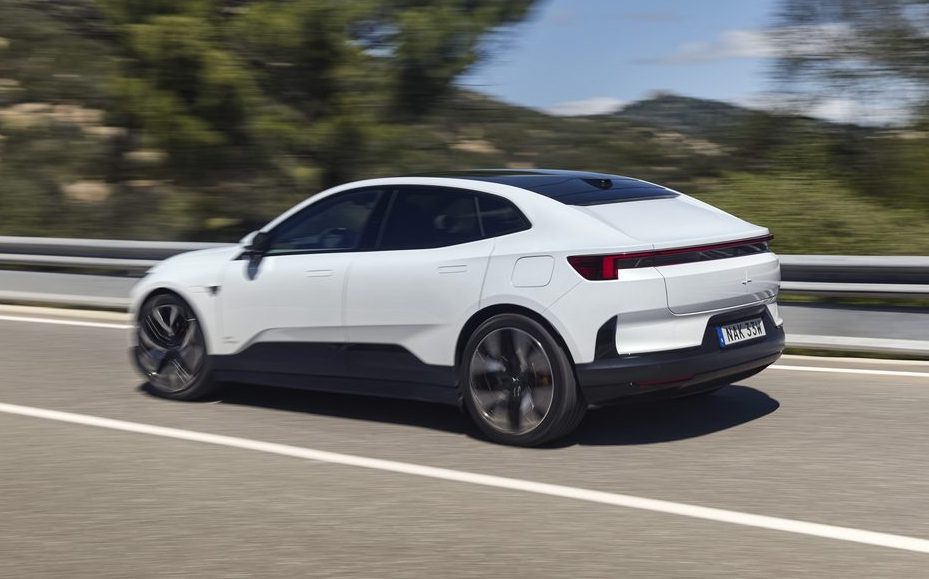
Polestar’s design team says that it targeted a low, aero-friendly roof so as to maximise range and efficiency, but it also wanted lots of rear space and headroom so that the 4 would live up to its badge and be a practical four-seater. The problem is that such divergent requirements are all-but impossible… unless you change the structure of the car.
In all cars there’s a chunky bit of metalwork at the back of the roof where it meets the rear window. It has to be substantial for body strength and crash protection, but if you’ve got people sitting up high it’ll quickly obliterate their headroom, and hairdos. So, Polestar moved that structure further back and down, eating into the space where a rear window would normally sit and leaving no room for glass.
This enabled the rear seat to be moved back and down, which Polestar says liberates both kneeroom and headroom.
So to enable drivers to see behind, within the little fin that sits at the back of the roof is a rear-facing camera which sends its HD feed to a digital rear-view screen in the cabin. It’s a system used by other cars, but whereas when you switch off the screen in other models, a the screen turns into a conventional rear-view mirror, in the Polestar 4 it’s only useful for checking on the well-being of rear seat occupants. Behind them is a big, blank panel.
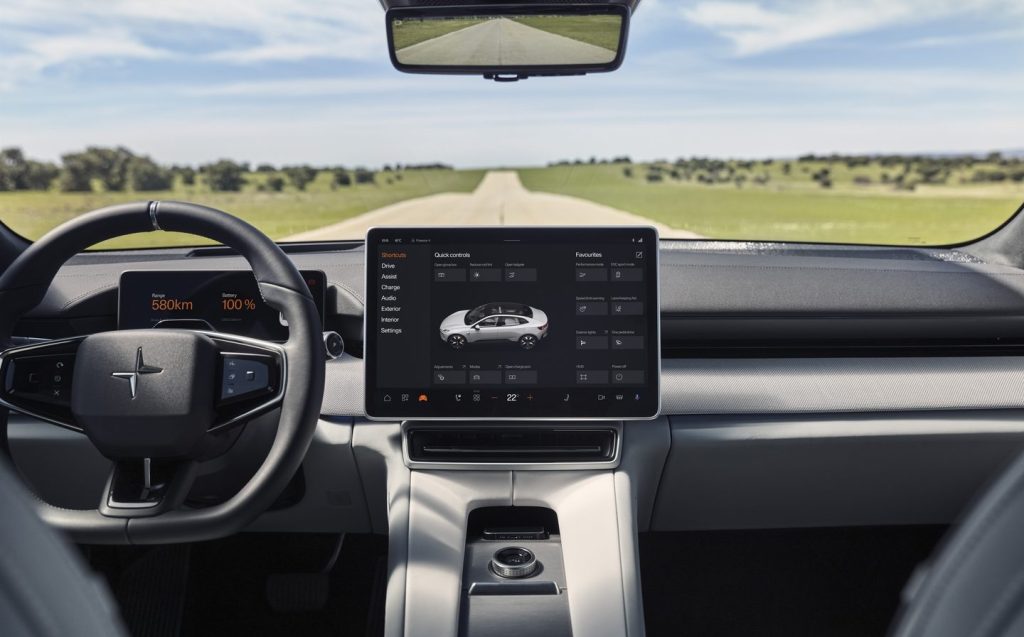
Does that feel weird? Yes, at first and especially every time you glance over your shoulder when changing lanes. It’s not the specific lack of visibility — the rear-facing camera works well enough — but just that the lack of light or vision through the back catches your peripheral vision and does indeed seem… disconcerting. Maybe van drivers will becomes accustomed to it more quickly but one can’t escape the impression that cutting off all rearward visibility except of the digital kind might not be the safest route to take, which makes it an odd decision for a car maker with its roots as part of Volvo.
That said, the rear passengers will not be complaining as the quirky design works as advertised. Even the tallest people should be able to get very comfortable in the back, such are the levels of legroom and headroom, while the massive glass roof means that plenty of light is allowed to enter the cabin.
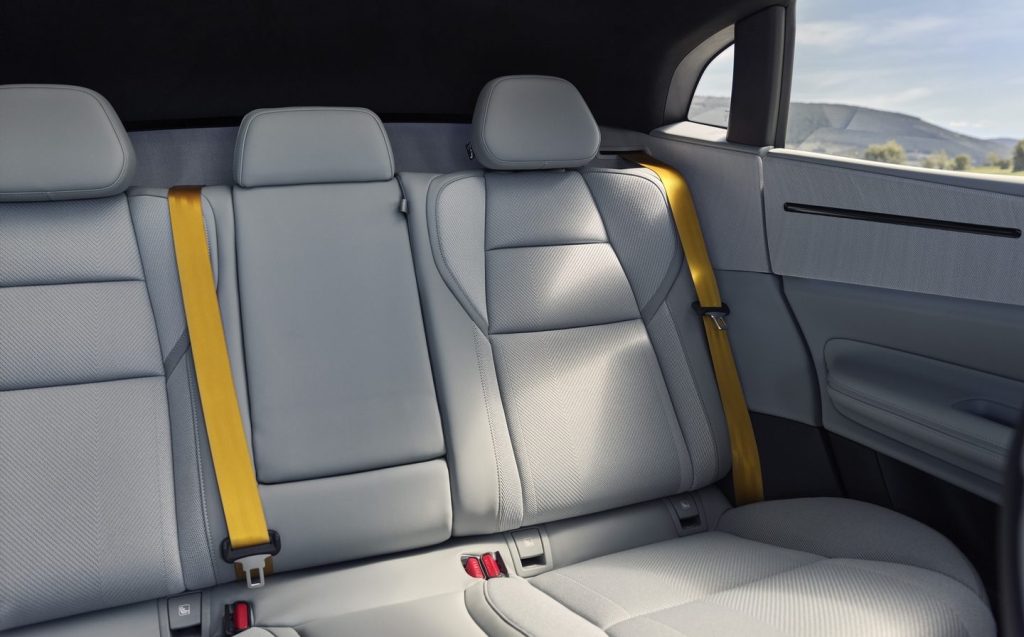
In fact, the rear backrest adjusts electrically allowing those seated back there to recline, which gives them a natural eye-line up and out of the roof, which is a rather pleasant way to travel. In some ways, the back of the Polestar 4 might just be the best seats in the car, not least because it’s barely any less roomy or comfortable than the rear of the bigger, pricier Polestar 3.
Not that the front isn’t pleasant. Polestar really leans into the Scandi-minimalist look, with simple, unadorned interior design that is almost entirely devoid of buttons. Indeed, aside from some fiddly haptic switches on the steering wheel (bin those, please Polestar) and a rotary control which takes care of stereo volume and a handful of other functions, everything is controlled via the 15.4in touchscreen.
That’s both good and bad. There is a proper digital driver’s display behind the steering wheel, and the info is also projected onto the windscreen, so Polestar hasn’t gone fully Tesla here. The centre screen is blissfully unburdened with driving data.
Polestar has also produced a screen layout and menu system which, despite there being more than 3,000 possible individual displays, is reasonably simple and intuitive to use. There are also some neat, if slightly gimmicky, touches such as choosing a planet of the solar system to adjust the ambient cabin lighting (Earth for green, the Sun for yellow, Uranus for blue).
However, in our time with the car, the screen itself proved occasionally laggy in its responses. And as ever a lack of physical buttons means more time with your eyes off the road, which is just never a clever idea.
Still, you get quality cabin materials and the 4 is perhaps the best-made Polestar yet when it comes to interior furnishings (it’s notably better than the more expensive Polestar 3 in this regard). Recycled and recyclable materials are to the fore, including a soft-touch woven fabric made from recycled PET bottles covering the seats, which is meant to look and feel like the textiles on high-end trainers.
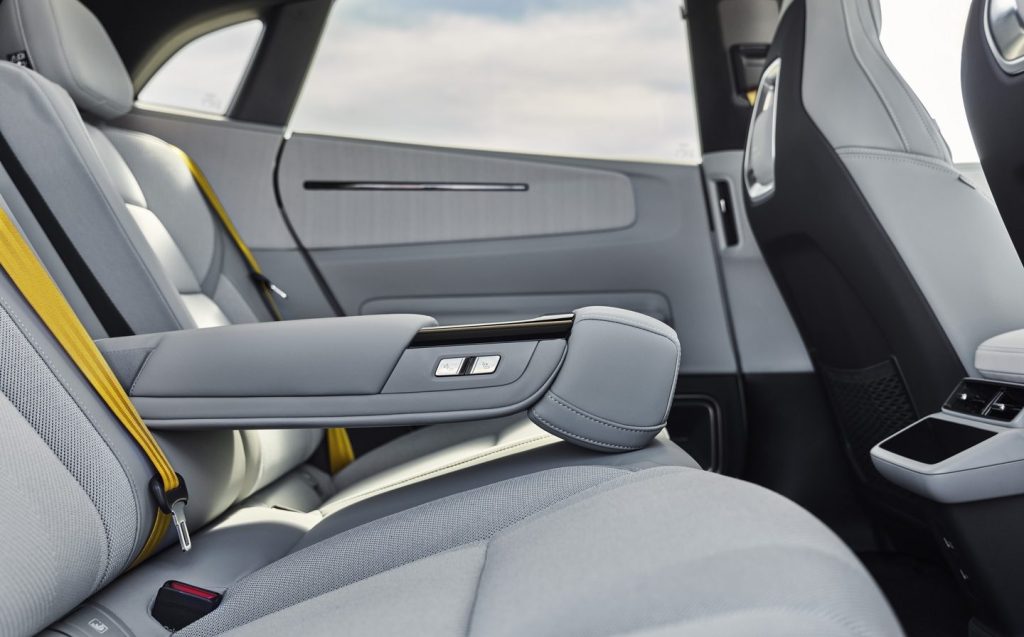
If that’s not to your taste, you can have leather sourced from Bridge of Weir in Scotland, using hides from beef herds which would not only have been otherwise sent to landfill, but which come from cows that Polestar says were regularly independently checked for health and happiness. Mind you, the company has set its leather trim price noticeably high — £3,900 at a minimum — and would clearly prefer that you, from an environmental point of view, picked the recycled plastic stuff.
Whichever trim you choose, the Polestar 4 is usefully practical with a 526-litre boot, and another 15 litres in a front storage compartment under the bonnet, into which you might just squeeze a charging cable or a small bag. There’s also a drop-down panel behind the rear headrests which allows you to load objects through, and if you fold those back seats there’s 1,536 litres of loadspace.
All this focus on the rear seats doesn’t mean that the Polestar 4 is rubbish to drive. In fact, it’s exceptionally good to drive, with one notable caveat that I’ll come on to shortly.
The wheelbase — the distance between the centre of the front and rear wheels — measures 2,995mm or slightly less than ten feet. This is not merely to give the Polestar 4 a roomy cabin, it’s also so that a large battery pack can be accommodated.
The lithium-ion pack holds 94kWh of usable energy at a full charge, which is enough to give the single-motor, rear-wheel-drive model an official range of up to 385 miles (expect less in the real world, especially when the ambient temperature dips below the constant 23C of the lab tests). Even the more powerful, twin-motor, four-wheel-drive version can manage up to 367 miles, it is claimed, which is at the upper end of what’s currently available.
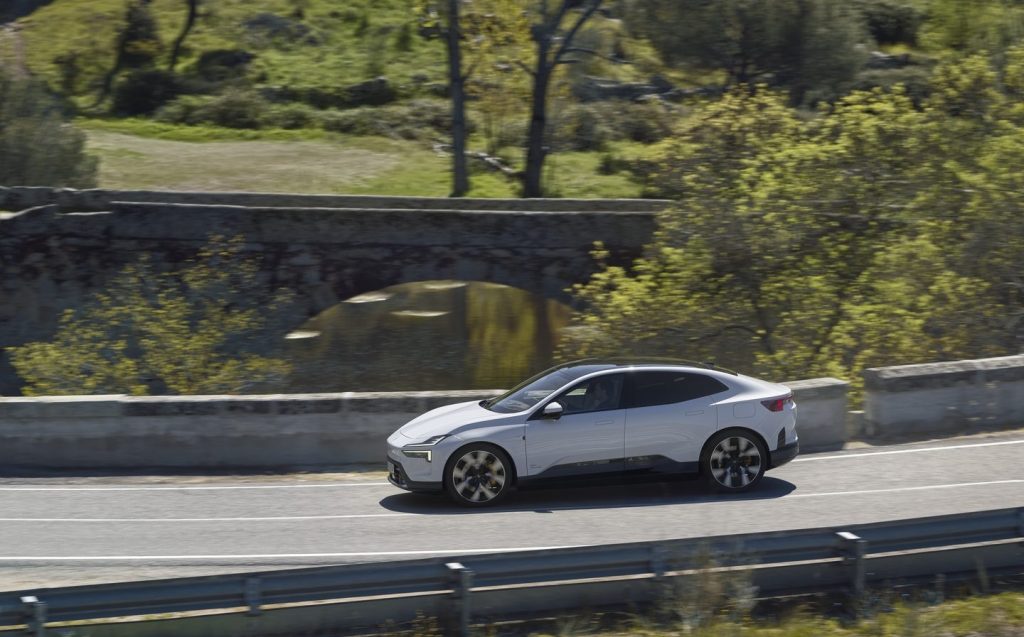
Needless to say, acceleration in that 537bhp twin-motor version is noteworthy, and you very definitely need to give your passengers fair warning that you’re about to mash the pedal to the carpet, as it will hit 62mph in just 3.8 seconds from standstill. As with almost all such rapid electric cars, this is a trick that rapidly loses its appeal due to the stomach-churning feeling it brings on.
Happily, the Polestar 4 is not merely a one-trick pony; it steers well, too. Despite weighing more than 2.2 tonnes at the kerb, the 4 is actually fun to drive. OK, so weight will always count against any performance car once the road starts to divert left or right, but within that limitation the Polestar 4 is entertaining. The steering is beautifully weighted and has just about enough feel through the slightly thick, spongy rim for you to have a decent idea of what the low-slung nose is up to.
Until the inevitable sensation of the car’s weight pulling the nose wide of a corner’s apex, the 4 turns in briskly and capably, and with all-wheel-drive traction you can fire out of corners like a Clint Eastwood Magnum bullet (complete with the squint from those slim headlights). The 4’s sense of balance and poise is evident, and while it may not be quite so plugged into the road and the driver’s palms as the new Porsche Macan, it’s certainly engaging and enjoyable.
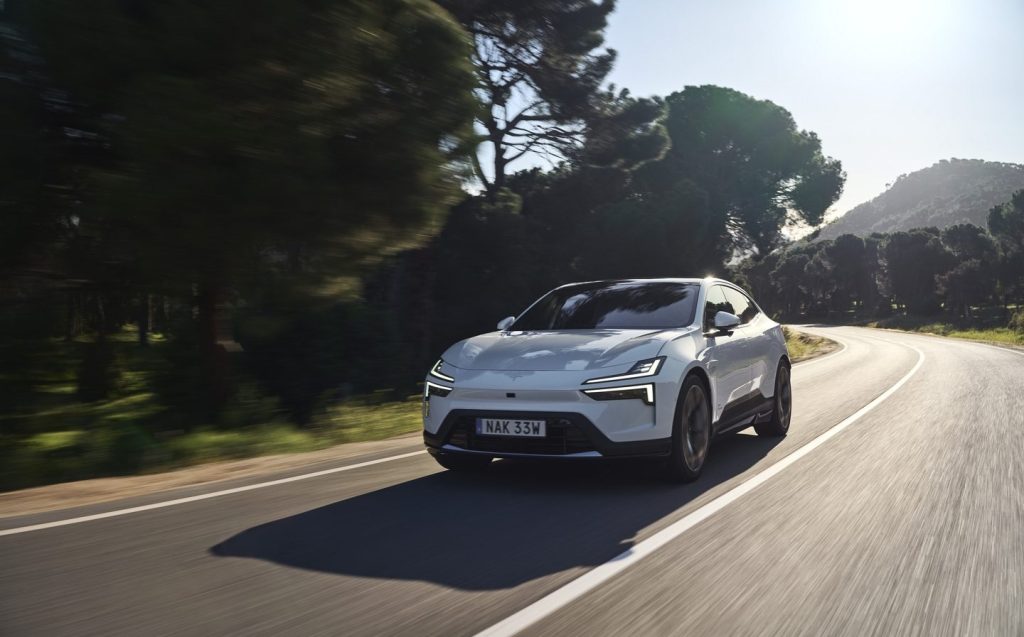
That caveat: as with early Polestar 2s, the ride quality is… not great. Spec the Performance pack for your Dual motor Polestar 4 and you get lots of good stuff — brakes by Brembo, brake calipers and seatbelts painted a dusky Swedish gold, and sportier tuning for the chassis and steering. The problem is that stiffer springs are also part of the package, and they turn what is already a firmly sprung car into something close to unacceptably harsh.
Bear in mind that we were test driving the Polestar 4 on largely smooth and sweeping roads around Madrid, and then imagine how hard-edged that suspension is going to feel on a broken British B-road. It’s the price you pay for the poise times the weight, divided by the laws of physics.
Happily, there is a better compromise to be made. Just go for the Single motor version. Not only will you save yourself a chunk of change (£59,990 versus £66,990, plus another £4,000 for the Performance pack — both prices significantly undercutting Porsche’s Macan) but you’ll also get a smoother ride quality. It’s not as if foregoing the Dual motor suddenly turns the Polestar 4 into some modern-day Jaguar XJ6, but it is at least a little easier on the spine, the nerves and the cabin fittings.
It would be easy to live without the Dual motor’s performance, too. As noted above, the headline-grabbing acceleration figure is just an expensive way of inducing vomiting, and since when was the Single motor’s 268bhp not enough for on-road driving? A 0-62mph time of 7.1 seconds is still decently brisk.
You’ll be able to squeeze more out of the battery on a long run, too. Polestar quotes 3.4 miles per kWh in terms of energy consumption, and we achieved 3.3 miles per kWh in mixed driving which included snarled-up morning traffic, big multi-lane motorways and twisty mountain roads. The dual motor version will hover at around the 2.5 miles per kWh figure if you’re using much of its significant performance.
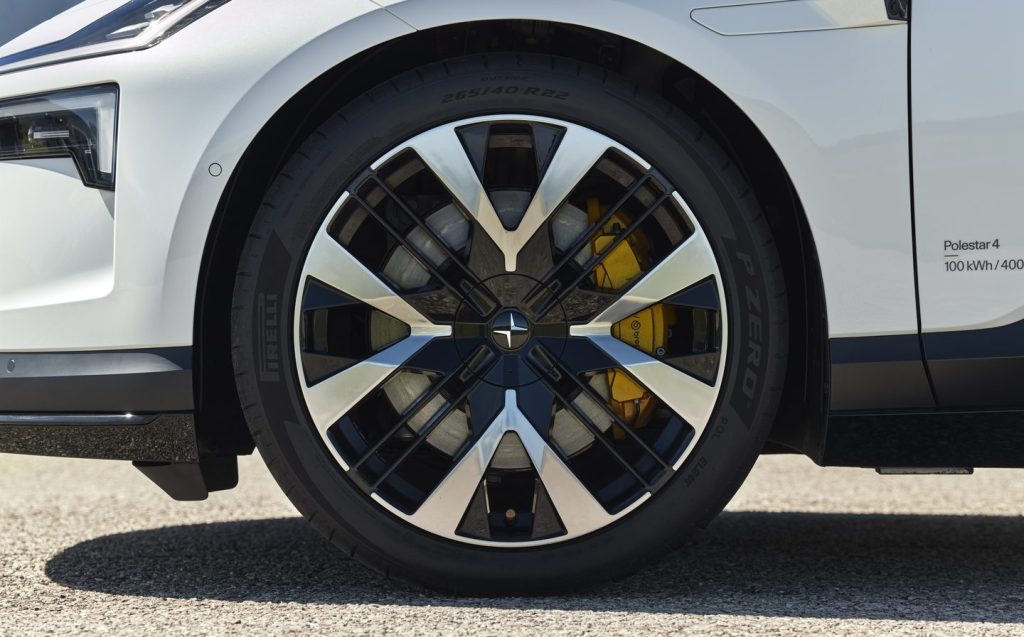
It’s a tricky car to pigeon-hole, the Polestar 4. Is it a sports saloon masquerading as an SUV (it even has, preposterously, a hill descent control function) or is it the other way around? Perhaps that doesn’t and shouldn’t matter. What it is, is gorgeous, spacious, long-ranged, quick and blessed with a tremendously interesting and well-made interior. The lack of rear glass is curious but then that’s where we started: Polestar is in a slightly odd space, but that — a sense of difference and newness — might be its strength.
Details such as the lack of a rear window may infuriate as much as intrigue but there’s no denying that this Polestar 4 ought to prove an interesting and satisfying car to own and drive. That’s assuming it and the Polestar 3 can both break through both the car-buying public’s current general hesitance about electric cars (most agree incentives are needed again if the government wants to hit its net zero targets), and finally lift the Polestar brand itself from niche interest to genuine BMW-beater. Neither will be an easy task.
Chinese car makers
Polestar is a Swedish brand with headquarters in Gothenburg. It is owned by Geely, a Chinese car giant.
Related articles
- If you found our review of the Polestar 4 interesting, you might want to read Will Dron’s review of the Maserati Grecale Folgore
- Make sure you take a look at the 872bhp Polestar 5 prototype
- Have you read our review of the 2024 Polestar 2?
Latest articles
- Seven great automotive events to visit this summer, from F1 to art and champagne
- Watch new Porsche 911 GT3 smash Nürburgring record for manual cars
- Skoda Elroq 2025 review: Czech carmaker can’t seem to miss with its electric family cars
- Five best electric cars to buy in 2025
- Should I buy a diesel car in 2025?
- F1 2025 calendar and race reports: The new Formula One season as it happens
- Zeekr 7X AWD 2025 review: A fast, spacious and high tech premium SUV — but someone call the chassis chief
- Denza Z9GT 2025 review: Flawed but sleek 1,062bhp shooting brake from BYD’s luxury arm
- Extended test: 2024 Renault Scenic E-Tech review


